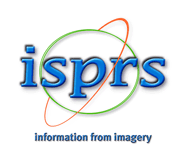From Point Cloud to 4D Thermal Model: Leveraging In-Situ Measurements from a Low-Cost Mobile Mapping System in Rabat, Morocco
Keywords: 3D urban modelling, 4D thermal model, RGB and TIR images, SfM, Mobile acquisition
Abstract. Thermal imaging provides valuable insights into building performance and urban environmental dynamics, yet integrating thermal data with 3D models remains challenging, particularly with limited equipment. This paper presents a comprehensive workflow from point cloud acquisition to 4D thermal model creation using a novel low-cost mobile triple-camera system in Rabat (Morocco). The methodology leverages a unique configuration with a central thermal camera positioned between two RGB cameras. First, terrestrial laser scanning data is processed to create 3D models suitable for thermal analysis and future microclimate simulations. The exterior orientation of RGB images is determined using Structure from Motion (SfM), then transferred to thermal imagery through the fixed geometric relationship between cameras, followed by a semi-automatic point- and line-based matching algorithm, achieving a spatial accuracy with average deviations of 2.9 cm for control points. Temperature data extracted via the FLIR SDK is projected onto the 3D model using ray-casting, with a weighted integration method resolving overlapping data based on view angle quality. The resulting spatiotemporal model enables analysis of dynamic thermal behaviour, revealing how vegetation and architectural elements can influence facade temperatures throughout the day. This framework creates spatially continuous ground truth data for upcoming comparisons with LASER/F simulation outputs, establishing a robust validation methodology for future urban planning scenarios.





